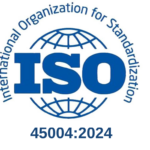In our previous edition of Insight, we ran Part 2 of our look into Contractor Safety Management and focused on the safety aspects associated with the middle stages of the Contractor Management Lifecycle – Contractor Engagement and Onsite Contractor Management. In the final instalment of this series, this edition will wrap up some aspects associated with the Onsite Contractor Management stage and then examine the final stage involving the Post-Works Contractor Safety Assessment. Our aim throughout this whole series has been to provide some useful information to assist your organisation with its WHS governance approach for contractors throughout the Contractor Management Lifecycle.

Onsite Contractor Management Stage
In our previous edition we focused on two core WHS governance activities for this stage – Supervision of the Contractor and Verification of the Contractor’s work via WHS inspections against documented safe work procedures. Another key governance item for managing Contractors is how WHS events such as hazards, near-hits and incidents are reported, investigated and actioned to prevent recurrence.
The Site Induction is one channel for communicating your organisation’s requirements for reporting of WHS events. Specific clauses within the Contract Agreement are another tool to ensure these requirements are understood. Almost all organisations these days have a culture of transparency and truth in reporting when it comes to reporting WHS incidents, however where the rubber hits the road is in what happens next and how effectively reported hazards, near-hits and incidents are investigated and actioned.
To assist here, it is beneficial to have a clear line of responsibility for these critical follow up activities, and as we have stated previously, a risk-based approach provides a prudent starting point. For WHS events where the risk is low or moderate, typically the Contractor owns the responsibility to follow up, investigate and report any findings to the Client. This allows the Contractor to demonstrate that their WHS management system is working effectively, as well as sharing any outcomes and learnings that may have a wider application across both organisations. Conversely, for WHS events where the risk is high or extreme, the Client may find it in their interests to own the follow up and investigation activities. This way, the Client has greater visibility, influence and control of the WHS event, especially where the event has occurred on their work site.
Post-Works Contractor Assessment
The final stage of the Contractor Management Lifecycle from a WHS perspective is to conduct an assessment of the contractor’s WHS performance over the duration of the works. There are a number of performance factors to consider. The ultimate aim however, is to determine whether your organisation will accept working with a particular contractor again in the future. These are some of the performance factors for consideration:
- Has the Contractor met all their WHS key performance indicators?
- Did the Contractor have any notifiable WHS incidents during the works?
- Were there any reported observations of unsafe behaviour by the Contractor’s workers?
- Was the outcome of Contractor WHS inspections good or poor?
- Were identified issues and non-compliances managed effectively and closed out in a timely manner?
Your organisation’s risk tolerance level will determine the extent to which you will or won’t accept a Contractor’s WHS performance. Bear in mind however, should poor WHS performance by a Contractor continue to be accepted on your work site, it could leave your organisation exposed in the event of a repeated or similar event. As the client, you should be able to demonstrate that you have a system in place that assesses Contractor WHS performance and considers the outcomes for future work engagements.
This now completes our series of articles on Contractor Safety Management. Engaging and managing contractors is not an exact science. There are many tasks a Client must undertake to ensure its Contractors meet their and your WHS performance requirements. The key ingredients for success here are in the planning for the work, identifying WHS hazards and issues upfront, having a Contractor assessment program in place, and importantly, applying a robust governance approach that not only monitors your Contractor’s WHS performance, but also guides you to intervene and address occasions where this does not meet your organisation’s risk tolerance.
Please contact QRMC for more information.











